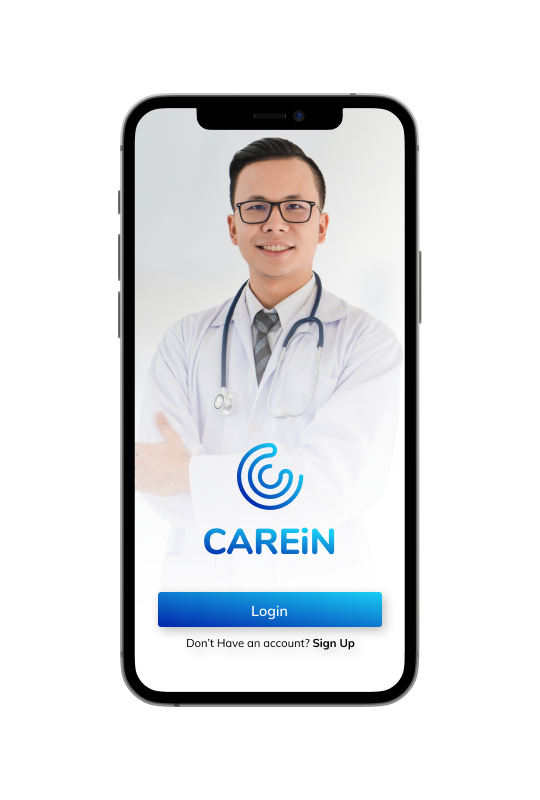Healthcare institutions generate a massive amount of data. While valuable, managing this information can become overwhelming. RPA enters the scene as a data-wrangling champion. These software robots automate tasks like data entry, validation, and reporting, ensuring accuracy and freeing up staff to analyze the information and provide better care. Discover how RPA can navigate the data deluge in healthcare and unlock its full potential.
Let’s explore how RPA is transforming healthcare, one automated process at a time.
Source: PrecendenceResearch
RPA’s impact extends across various healthcare functions, effectively managing tasks such as patient registration, claims processing, data entry, and report generation.
Explore the various use cases, examples, challenges, benefits, and implementation tips for RPA in healthcare in this blog to gain a comprehensive understanding of its transformative impact.
How Does RPA Work in the Healthcare Industry
Robotic Process Automation (RPA) has become a buzzword in healthcare, promising a future of streamlined workflows and empowered staff. But how exactly does it work its magic behind the scenes? Let’s peel back the layers and understand the fascinating mechanics of RPA in action:
1. Identifying the Targets: The first step is pinpointing repetitive, high-volume tasks that bog down healthcare professionals. These could include tasks like appointment scheduling, data entry from various forms, insurance claim processing, or generating reports.
2. Scripting the Magic: Once the tasks are identified, developers create scripts – essentially a set of instructions – that mimic human interaction with the healthcare software. These scripts guide the RPA “bots” through each step, ensuring accuracy and consistency.
3. Training the Robots: Unlike their sci-fi counterparts, RPA bots don’t possess artificial intelligence. They require training on the specific software systems used within the healthcare organization. This training involves configuring the bots to navigate menus, fill out forms, and handle data manipulation tasks.
4. Integration and Orchestration: Once trained, the RPA bots are integrated into the existing healthcare IT infrastructure. This allows them to seamlessly interact with various software applications, automate tasks, and share data securely.
5. Monitoring and Optimization: RPA implementation isn’t a “set it and forget it” solution. Healthcare organizations need to monitor the performance of their bots and ensure accuracy and efficiency. This allows for continuous optimization and fine-tuning of the scripts for even greater automation benefits.
By understanding these core principles, you gain a deeper appreciation for how RPA works its wonders in the healthcare landscape. It’s not magic, but it’s certainly a powerful tool for boosting efficiency and freeing up valuable human resources to focus on what matters most – patient care.
Businesses Benefits of Using RPA in Healthcare Operations
Robotic Process Automation (RPA) is reshaping healthcare operations. Explore the business benefits of incorporating RPA into the healthcare ecosystem.
1. Enhancing Patient-Centric Experiences
Robotic Process Automation (RPA) in healthcare significantly contributes to creating a personalized user experience for both patients and medical professionals. Automation of rule-based administrative tasks allows healthcare providers to dedicate more time to patient care, fostering a more personalized and empathetic approach. This enhanced user experience leads to increased patient satisfaction and loyalty. By leveraging RPA, healthcare organizations can streamline processes, reduce wait times, and ensure a seamless and tailored interaction with patients. This not only improves the overall quality of healthcare services but also contributes to positive patient perceptions, ultimately driving business growth and reputation.
2. Optimizing Appointment Turnout
RPA’s ability to automate appointment scheduling and send timely reminders to patients has a direct impact on appointment turnout. The automated process eliminates the need for human intervention in scheduling, making it faster and more efficient. By sending reminders, RPA bots reduce the likelihood of patients forgetting about their appointments, leading to increased turnout. This not only benefits patients by ensuring they receive timely healthcare services but also improves the overall user experience. Additionally, the optimization of the patient admission and discharge process further contributes to higher levels of user satisfaction, making healthcare operations more patient-centric and efficient.
3. Mitigating the Risk of Human Errors
One of the key advantages of implementing RPA in healthcare is the significant reduction in the risk of human errors. Automation eliminates the potential for errors caused by factors such as fatigue, distraction, or oversight in repetitive tasks. This results in improved accuracy and enhanced data quality, crucial factors in maintaining the integrity of healthcare operations. By minimizing errors in tasks such as data entry and record-keeping, RPA contributes to more reliable and efficient healthcare processes. This, in turn, enhances patient safety, ensures regulatory compliance, and supports better overall healthcare outcomes.
4. Fostering Employee Satisfaction:
RPA plays a pivotal role in improving employee satisfaction within the healthcare sector. By automating repetitive and mundane tasks, RPA allows healthcare professionals to focus on more strategic and intelligence-based roles. This shift not only enhances their capabilities but also provides opportunities for continuous growth and learning. As employees engage in more meaningful tasks, their job satisfaction increases, leading to a positive work environment. RPA-driven automation helps in achieving a balance between operational efficiency and employee well-being, contributing to the overall success of healthcare organizations.
5. Cost Efficiency
Contrary to the myth that technology integration is expensive, RPA services in healthcare offer significant cost savings. RPA performs tasks quickly and efficiently, reducing the need for extensive human involvement. The automation of repetitive tasks decreases the risk of errors, which can be costly in terms of time and resources. By eliminating manual errors and ensuring compliance with regulations, RPA contributes to cost efficiency in healthcare operations. The financial benefits include savings on human resources costs, reduction in operational errors, and improved patient care through streamlined processes. RPA’s cost-effective nature makes it a valuable investment for healthcare organizations looking to enhance efficiency while controlling expenses.
6. Achieving Cost-Efficient Operations
The implementation of RPA in healthcare not only streamlines processes but also enhances data protection. Automated processes ensure a higher level of security during data transfer and management. In manual processes, there is a potential risk of unintended access to sensitive reports by unauthorized individuals. However, with automated systems, access is restricted only to authorized personnel, ensuring a more secure environment for data handling. This is particularly crucial in healthcare, where patient data security is paramount. RPA helps healthcare organizations adhere to regulations such as the Health Insurance Portability and Accountability Act (HIPAA), ensuring the confidentiality and integrity of patient health information. Automated processes contribute to a more robust and secure data handling environment, minimizing the risks associated with manual data management.
Use Cases Of RPA In Healthcare
Explore the diverse applications of RPA in healthcare through the following use cases, showcasing its transformative impact on various areas of the industry.
1. Regulatory Compliance
Adhering to regulatory compliance is paramount in the healthcare sector, and RPA serves as a valuable tool for automating various compliance-related tasks. RPA ensures accuracy and timeliness in generating reports, collecting and verifying data, and maintaining records to meet regulatory standards. By automating compliance-related processes, healthcare organizations can reduce the risk of errors, streamline complex regulatory workflows, and provide auditable records. RPA contributes to the efficiency and effectiveness of compliance management, allowing healthcare professionals to focus on delivering high-quality care while maintaining compliance with industry regulations.
2. Elevating Data Digitization
The digitization of documents is a critical aspect of healthcare management, and RPA brings advanced capabilities such as Natural Language Processing (NLP), Optical Character Recognition (OCR), and data labeling to streamline this process. RPA services for healthcare can leverage Intelligent Document Processing (IDP) to prepare and ingest documents efficiently. This includes converting physical documents into digital formats and extracting relevant information for storage in patient repositories. By automating the document digitization process, healthcare organizations can enhance data accuracy, reduce manual effort, and ensure the seamless accessibility of patient information when needed.
2. Streamlining Account Settlement
Healthcare delivery involves managing multiple accounts for individual patients, encompassing various services such as consultations, tests, and medications. Manual management of these accounts is prone to errors and can lead to increased wait times for patients. RPA in healthcare simplifies account settlement by consolidating all relevant accounts into a unified system. The automation process ensures accurate calculations, reducing the likelihood of billing errors. Furthermore, RPA facilitates the automatic generation of push notifications to patients, allowing them to settle their accounts without the need to wait in queues. This not only improves the financial workflow for healthcare providers but also enhances the overall patient experience.
3. Asset Tracking
Efficient asset tracking is essential for the smooth operation of healthcare facilities, and RPA, when integrated with IoT-powered sensors, offers a powerful solution. RPA software combined with digital sensors enables real-time tracking of medical equipment, reducing the time spent searching for misplaced items. This not only enhances operational efficiency but also ensures that medical staff can quickly locate and utilize necessary equipment. Moreover, this tracking approach can extend to the precise monitoring of organs designated for transplantation, facilitating meticulous surgical planning and seamless procedures. RPA-driven asset tracking thus contributes to improved patient care and optimized hospital operations.
4. Optimizing Insurance Claim Management
Robotic Process Automation in healthcare claims processing addresses the complexities associated with insurance claims. Automating this process ensures the timely completion of tasks while adhering to regulatory compliances. RPA integration streamlines the entire workflow of healthcare insurance claims processing, from claim submission to settlement. This not only accelerates the claims processing timeline but also minimizes errors in documentation. By automating routine tasks, RPA allows healthcare professionals to focus on more complex aspects of claim management, improving overall efficiency and accuracy in the insurance claims process.
5. Enhancing Workflow Efficiency
Efficient workflow management is fundamental to the seamless operation of healthcare organizations. Traditional manual management of processes, including patient treatment, inventory, and resource utilization, is time-consuming and prone to errors. RPA in healthcare brings automation to these workflows, optimizing resource utilization and enabling a higher focus on critical activities. By automating routine tasks, healthcare providers can enhance operational efficiency, reduce errors, and ensure a more streamlined workflow. This not only improves the overall quality of healthcare services but also contributes to cost-effectiveness and resource optimization.
6. EHR Management
Electronic Health Records (EHR) management is a cornerstone in modern healthcare, and RPA introduces transformative capabilities in this domain. RPA bots can revolutionize the healthcare industry by continuously monitoring data from various sources, collecting patient information, and updating Electronic Health Records (EHRs) and Electronic Medical Records (EMRs). The use of Optical Character Recognition (OCR) technology allows these bots to extract relevant information from diverse documents, ensuring that patient records are comprehensive and up-to-date. This automation not only reduces the manual effort required for record-keeping but also enhances the accuracy and accessibility of patient information, contributing to improved patient care and streamlined healthcare workflows.
7. Data Analytics
Healthcare organizations generate vast amounts of data, and RPA tools provide a valuable resource for streamlining internal research and analysis. RPA bots can be programmed to input patient information and prepare datasets for further analysis. This empowers healthcare professionals to enhance diagnostic precision, personalize treatment plans, and derive insights from the wealth of healthcare data available. Additionally, RPA facilitates the integration of business intelligence tools for in-depth analysis, aiding healthcare providers in making informed decisions and improving overall healthcare outcomes.
8. Revolutionizing Appointment Management
Robotic Process Automation (RPA) plays a crucial role in transforming the appointment scheduling process within healthcare organizations. By automating this task, healthcare providers can significantly reduce the administrative burden associated with appointment management. RPA systems can integrate with scheduling software to seamlessly coordinate patient appointments, taking into account the availability of healthcare professionals and the preferences of patients. Automated reminders and notifications can be sent to patients, ensuring they are well informed about their upcoming appointments. This not only improves patient satisfaction but also helps in reducing no-shows and last-minute cancellations. Additionally, the system can dynamically adjust schedules in case of unforeseen changes, providing a smooth and efficient scheduling process.
How To Implement RPA In Healthcare?
The integration of Robotic Process Automation (RPA) in healthcare requires a strategic approach to streamline processes and optimize workflows. Discover the essential steps and key considerations for successfully implementing RPA in the healthcare sector
1. Process Identification for RPA Implementation
Initiating the journey towards RPA implementation in healthcare begins with a meticulous identification of processes suitable for automation. Look for tasks that are repetitive, rule-based, and involve a substantial volume of transactions. These processes become the prime candidates for RPA, as automation can significantly enhance efficiency and accuracy in handling routine tasks. Identifying these processes forms the foundation for a successful implementation strategy.
2. Stakeholder Engagement in RPA Implementation
The active involvement of key stakeholders is paramount during the early stages of RPA implementation. Engage healthcare providers, IT teams, and compliance officers to ensure their perspectives are considered. This involvement fosters alignment with organizational goals and compliance requirements, essential elements for the success of RPA initiatives. Early collaboration with stakeholders also enables a comprehensive understanding of the unique challenges and priorities of each department, facilitating a more tailored RPA solution.
3. Selection of an Appropriate RPA Partner
Choosing the right RPA partner is a critical step in ensuring a successful implementation. Opt for a healthcare RPA software development company that demonstrates a proven track record in building scalable healthcare applications. It is crucial that the chosen partner possesses expertise in medical compliance and is well-versed in advanced technologies such as AI and data analytics. This careful selection ensures the development of a robust and compliant RPA solution that aligns with the specific needs of the healthcare industry.
4. Discussion of Specific RPA Requirements
Engaging in detailed discussions with the development team is crucial to articulate specific RPA requirements tailored to the unique needs of the healthcare organization. Consideration of existing IT infrastructure limitations is essential, and a progressive approach to automation should be adopted. These discussions pave the way for a customized RPA solution that not only addresses the immediate requirements but also allows for future scalability and adaptability.
5. Comprehensive Training for RPA Users
Comprehensive training is a cornerstone for the successful integration of RPA into healthcare operations. Begin by providing thorough training to project managers who are overseeing the implementation. Subsequently, extend this training to staff members who will be utilizing RPA tools. Proficiency among users ensures a smooth transition to automated processes, minimizing potential disruptions, and building confidence and enthusiasm among staff. Well-trained users are essential for maximizing the benefits of RPA.
6. Continuous Monitoring and Optimization of RPA Processes
The implementation of RPA is an ongoing process that requires continuous monitoring and optimization. Establish a system for regular monitoring of RPA processes to identify any issues or areas for improvement. Regular evaluation of performance metrics allows for proactive optimization of workflows, ensuring that RPA processes remain efficient, effective, and aligned with the evolving needs of the healthcare organization.
7. Evaluation of Implementation Costs and ROI Opportunities
Evaluate the costs associated with RPA implementation and continually measure the return on investment (ROI) opportunities. While there may be upfront costs, many healthcare organizations experience substantial cost savings and operational efficiency gains over time. Regularly measuring ROI helps justify the initial investment, demonstrating the tangible benefits and positive impact on cost-effectiveness achieved through RPA.
8. Stay Current with RPA Trends
Remaining informed about the latest developments and trends in RPA within the healthcare industry is crucial for long-term success. Proactive engagement with emerging technologies and industry trends ensures that the organization stays competitive and continues to enhance its processes through the adoption of new automation technologies. Staying current with RPA trends positions the healthcare organization to leverage the latest innovations for ongoing improvement and innovation.
Challenges And Their Solution To RPA Implementation In Healthcare
Navigating the implementation of Robotic Process Automation (RPA) in the healthcare sector comes with its unique set of challenges. Discover the complexity and effective solutions as we start on the complicated path of incorporating RPA into healthcare workflows.
1. Ensuring Regulatory Adherence
Strict regulations, including HIPAA and PCI DSS, govern the healthcare industry, demanding meticulous attention to data security during RPA implementation. Healthcare organizations face the formidable challenge of navigating a regulatory landscape governed by stringent privacy and security standards. The Health Insurance Portability and Accountability Act (HIPAA) and the Payment Card Industry Data Security Standard (PCI DSS) mandate robust protection of patient data. The challenge lies in implementing RPA solutions that not only automate processes but also adhere to these complex regulations to safeguard patient privacy and maintain data integrity.
Solution
Develop RPA solutions that align with regulatory standards, incorporating robust encryption practices and access controls to safeguard patient information. Continuous monitoring and adaptation to evolving compliance requirements are essential. The solution involves meticulous planning and implementation of RPA processes that are compliant with the prevailing healthcare regulations. Encryption practices, such as end-to-end encryption for sensitive data and stringent access controls, are integral to the development of RPA solutions. Continuous monitoring ensures that any changes in regulatory requirements are promptly addressed, with updates made to the RPA processes as necessary. Collaborating with legal and compliance experts becomes crucial to maintaining the highest standards of regulatory adherence throughout the lifecycle of RPA implementation.
2. Navigating Change Dynamics
Resistance to change among healthcare employees can disrupt workflows and hinder RPA adoption. Implementing RPA in healthcare introduces a significant paradigm shift, challenging the established workflows and potentially causing resistance among healthcare professionals. Employees may fear job displacement or may be unfamiliar with the new technologies, making it essential to address these concerns to ensure a smooth adoption process.
Solution
Prioritize change management by involving employees early, providing comprehensive training, and transparently communicating the benefits of RPA. Address concerns promptly and establish feedback mechanisms for ongoing support. The solution involves proactive change management strategies. Engaging employees early in the RPA implementation process, providing comprehensive training programs, and openly communicating the advantages of automation are crucial steps. Addressing concerns promptly and transparently can help alleviate fears and build confidence in the new technology. Establishing feedback mechanisms creates an avenue for employees to express concerns and suggestions, fostering a collaborative environment where the workforce feels heard and involved in the transition.
3. Simplifying IT Integration
Complex healthcare IT infrastructures with legacy applications pose integration difficulties for RPA implementation. The healthcare sector often grapples with intricate IT infrastructures comprising diverse legacy applications that may not seamlessly integrate with new technologies like RPA. Integrating RPA into such environments requires a careful understanding of existing systems and a thoughtful approach to ensure smooth interoperability.
Solution
Conduct a thorough analysis of existing infrastructure, identify integration points, and collaborate closely with IT teams. Implement middleware technologies and APIs for seamless data exchange, customizing RPA solutions to fit healthcare system requirements. Addressing this challenge involves a comprehensive analysis of the existing IT landscape. Identifying integration points and working closely with IT teams helps create a roadmap for successful integration. The use of middleware technologies and Application Programming Interfaces (APIs) becomes essential for facilitating seamless data exchange between RPA processes and existing healthcare systems. Customizing RPA solutions to align with the specific requirements of healthcare systems ensures that the integration is not only smooth but also optimized for improved efficiency.
4. Ensuring Scalability and Maintenance
Scaling RPA capabilities to match growing healthcare demands and ensuring consistent maintenance can be challenging. As healthcare organizations expand, the demand for RPA capabilities grows, requiring a scalable infrastructure that can adapt to increasing workloads. Additionally, maintaining the efficiency of RPA bots over time necessitates dedicated personnel and systematic maintenance procedures.
Solution
Design a scalable RPA infrastructure that adapts to increasing workloads. Establish a dedicated development team for routine audits, updates, and enhancements. Utilize proactive monitoring tools and collaborate with vendors for ongoing support. The solution involves designing RPA processes with scalability in mind, ensuring they can efficiently handle the growing volume of tasks. Establishing a dedicated development team is essential for routine audits, updates, and enhancements to address any issues and keep the RPA system current. Proactive monitoring tools help identify potential bottlenecks or performance issues, allowing for timely interventions. Collaborating with vendors for ongoing support ensures access to the latest updates and expertise, creating a sustainable and robust RPA infrastructure.
5. Addressing Interoperability Hurdles
Integrating RPA with diverse healthcare systems requires overcoming interoperability challenges. Interoperability challenges arise due to the diversity of healthcare systems, applications, and platforms. RPA integration needs to seamlessly communicate with various systems, adhering to industry standards to ensure smooth data exchange.
Solution
Develop RPA solutions adhering to healthcare interoperability standards like HL7 and FHIR. Foster collaboration between RPA developers and healthcare IT professionals. Regularly test and validate against interoperability standards during development and maintenance. The solution requires developing RPA processes that adhere to prevalent healthcare interoperability standards, such as Health Level Seven (HL7) and Fast Healthcare Interoperability Resources (FHIR). Collaboration between RPA developers and healthcare IT professionals is crucial for understanding and addressing interoperability challenges. Regular testing and validation against interoperability standards, both during the development phase and routine maintenance, help ensure that the RPA system seamlessly integrates with various healthcare systems, promoting efficient data exchange and communication.
Real-World Examples Of How Healthcare Organisations Are Using RPA
Discover how RPA is reshaping the industry by streamlining processes and improving patient outcomes with the following examples
1. T-systems
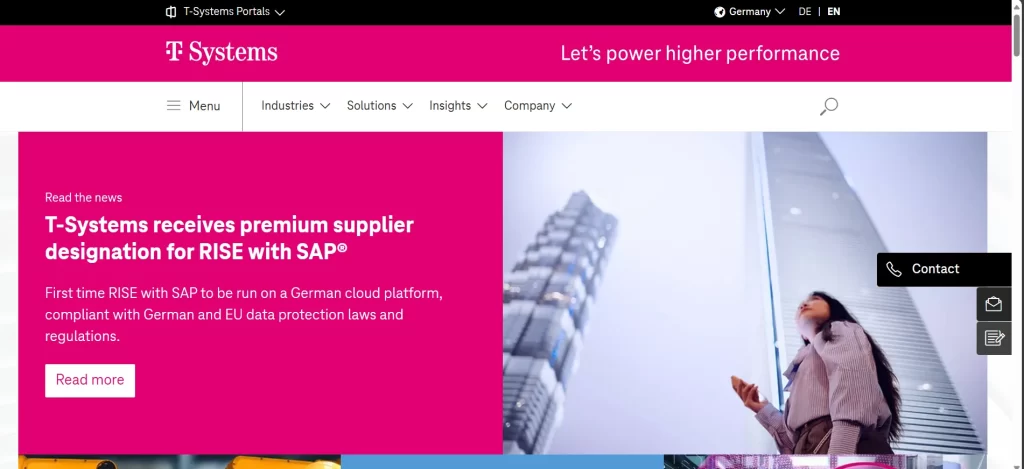
The T-Systems organization in the UK utilizes RPA to enhance healthcare processes, with a specific focus on ensuring seamless organ transplant operations. This involves the precise tracking of the time and location of organs, contributing to the efficiency and reliability of transplant procedures. T-Systems specializes in mapping the entire patient journey, encompassing prevention, treatment, follow-up care, and rehabilitation solutions. The application of RPA in tracking organ data aligns with their commitment to providing end-to-end healthcare solutions. Beyond organ tracking, T-Systems employs RPA to develop a variety of health solutions. This signifies a broader use of automation in healthcare, showcasing how RPA can contribute to the advancement of healthcare services and operations
2. University Hospitals Birmingham
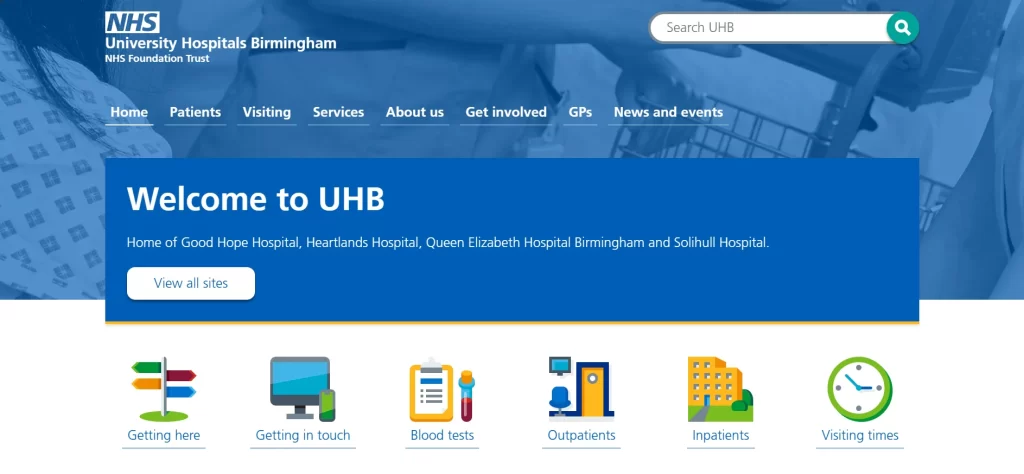
University Hospitals Birmingham (UHB) in the UK has successfully integrated RPA into their patient administration system, transforming the patient registration process. Through the deployment of self-service kiosks across various healthcare facilities, UHB has significantly improved the patient experience. The self-registration process at these kiosks has not only eliminated queues but has also garnered high patient satisfaction ratings. This positive response is attributed to the quick and efficient registration facilitated by RPA. The implementation of these kiosks has led to a remarkable 50% increase in the efficiency of front-desk staff, and the patient flow has doubled—all achieved without the need to hire an additional 20-30 receptionists. UHB’s case demonstrates how RPA in healthcare can enhance operational efficiency and positively impact patient satisfaction.
3. GE Healthcare
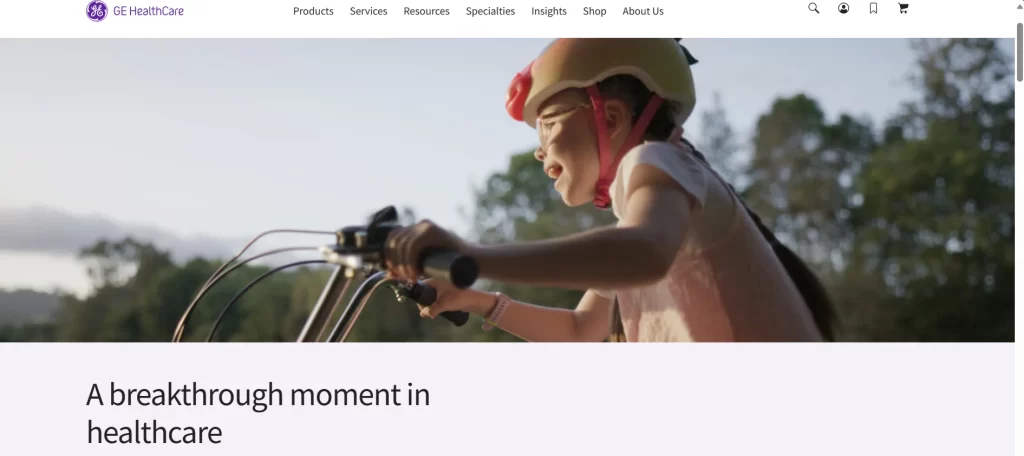
GE Healthcare, a global leader in healthcare technology, has harnessed the power of RPA to optimize its revenue cycle management procedures. By incorporating RPA into various processes, GE Healthcare has streamlined reimbursement procedures, reduced billing errors, and enhanced claims administration through automation. This utilization of RPA in healthcare showcases how technology can be employed to bring about significant improvements in the financial aspects of healthcare operations. The result is a more efficient and error-resistant revenue cycle management system that contributes to the overall effectiveness of GE Healthcare’s services.
4. McKesson Corporation
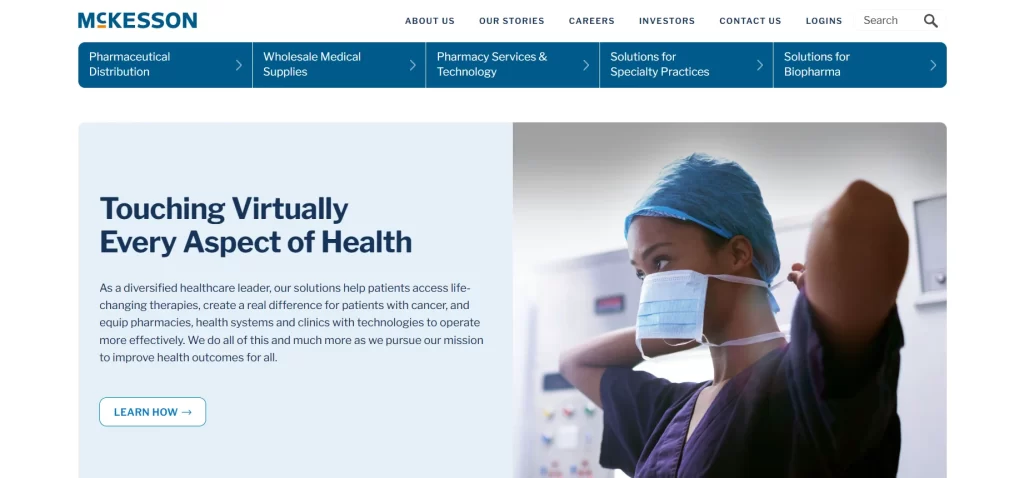
As one of the leading providers of healthcare services, McKesson Corporation has embraced RPA to enhance various aspects of its operations. RPA in healthcare at McKesson is notably utilized for managing inventories, streamlining the supply chain, and expediting order fulfillment. Through the strategic application of RPA, McKesson has achieved increased inventory precision, a reduction in manual errors, and ensured the prompt delivery of medical supplies. This real-world example emphasizes how RPA can be a transformative force in optimizing logistics and inventory management within healthcare organizations, leading to improved operational efficiency.
5. Telus

Telus and Babylon Health have collaboratively developed a groundbreaking smartphone app that seamlessly integrates telecommunications expertise with advanced AI technology. This innovative app, aimed at enhancing healthcare accessibility for Canadians, offers comprehensive patient support by combining Telus’s telecommunications capabilities with Babylon Health’s AI functionalities. The incorporation of Robotic Process Automation (RPA) and AI technologies underscores the partners’ commitment to providing innovative digital health solutions, with the overarching objective.
Conclusion
the healthcare sector faces significant hurdles, such as a scarcity of specialized resources and the complex task of managing vast volumes of patient data.
The introduction of Robotic Process Automation (RPA) emerges as a transformative solution, acting as a digital assistant that efficiently navigates through intricate operational processes. By automating routine tasks and administrative functions, RPA empowers healthcare practitioners to redirect their focus toward more critical aspects of patient care. This not only enhances overall operational efficiency but also contributes to a more streamlined and simplified medical practice.
Delaying the investment in RPA within the healthcare industry may lead to missed opportunities for substantial cost savings and heightened efficiency. The automation of repetitive tasks not only reduces the likelihood of errors but also accelerates processes, ultimately translating into improved patient outcomes.
How Can Idea Usher Help Implementing RPA in Healthcare?
Idea Usher offers top-notch RPA services tailored specifically for the healthcare industry, providing a robust automation solution for your medical business.
Here is a case study of how we successfully implemented RPA in our client’s business.
Engage in a comprehensive discussion about your requirements with our experts at Idea Usher, and we will automate your healthcare operations, empowering you to deliver optimal services to your patients.
Work with Ex-MAANG developers to build next-gen apps schedule your consultation now
FAQs
Q. What does RPA mean in the context of healthcare?
A. Robotic Process Automation (RPA) in healthcare represents a transformative technology designed to revolutionize the healthcare sector. It automates repetitive and time-consuming tasks, seamlessly integrating with existing systems. This includes accelerating processes such as patient registration, claims processing, and data entry. By minimizing errors and boosting operational efficiency, RPA empowers healthcare professionals to prioritize quality care and enhance patient outcomes. The adoption of RPA aims to create a more efficient and patient-centric healthcare ecosystem through streamlined workflows and increased accuracy.
Q. How does the implementation of RPA contribute to efficiency and accuracy in healthcare operations?
A. The implementation of Robotic Process Automation (RPA) in healthcare has significantly improved efficiency and accuracy. By automating routine tasks, RPA minimizes human errors and facilitates seamless data integration. This enables healthcare professionals to dedicate more time to critical tasks and enhances precision in processes like data entry and claims processing. The comprehensive analysis of patient information by RPA contributes to improved overall healthcare quality and outcomes. The integration of RPA applications is considered essential for the continued advancement of the healthcare industry, ensuring efficient processes and accurate results.
Q. What limitations are associated with implementing RPA in healthcare?
A. One notable limitation of RPA applications in healthcare is their reliance on structured data, while approximately 90% of healthcare industry data is unstructured. The emergence of Intelligent Process Automation (IPA) is expected to address and overcome this drawback.
Q. Can RPA be integrated into existing healthcare workflows and processes without causing disruptions?
A. Yes, RPA implementation in the healthcare industry is designed to complement existing workflows and processes. This ensures a smooth integration of RPA without disrupting the current system.




















